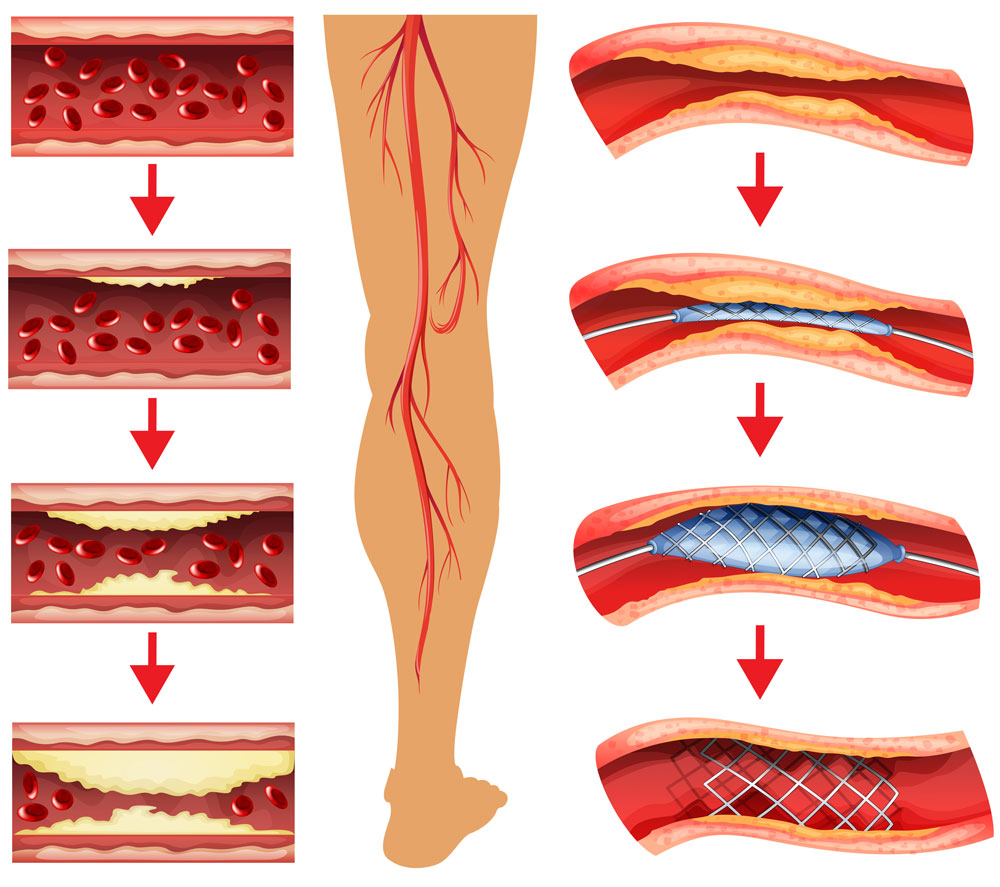
Treatment of Leg Artery (Peripheral Artery) Occlusion
Leg artery occlusion occurs when the arteries in the legs become narrowed or occluded. This can lead to pain, fatigue, and even difficulty walking due to insufficient blood and oxygen supply to the legs. Peripheral arterial occlusion treatment aims to restore proper blood flow and prevent serious health problems in the legs.
What is Leg Artery (Peripheral Artery) Occlusion?
The peripheral artery is a large vessel that carries oxygenated blood from the heart to the legs. Fat, cholesterol, and other substances can build up on the inner surface of the leg artery and cause atherosclerosis. This hardening can lead to the artery's narrowing and blood flow restriction. Leg artery occlusion is a severe form of this narrowing.
What is the Importance of Peripheral Arterial Disease?
Peripheral artery disease is a condition in which occlusion occurs in the arteries of the legs. This can lead to severe consequences such as leg pain, fatigue, weakness, skin color changes, wound healing, and eventually gangrene.
Reduced blood flow in the legs leads to insufficient oxygen and nutrients reaching the muscles in the limbs. This can result in pain and fatigue. It can also be a leading sign of more severe health problems such as heart attack and stroke.
What are the Symptoms of Leg Artery (Peripheral Artery) Occlusion?
Symptoms of leg artery occlusion are as follows:
- Pain, cramps, or weakness in the legs
- Leg pain when walking
- Numbness, tingling, or cold sensation in the foot or toes
- Skin changes (discoloration, especially on the legs, thinning of the skin, or ulcers on the fingertips)
How is Leg Artery (Peripheral Artery) Occlusion Diagnosed?
An occluded leg artery is diagnosed using medical history, physical examination, blood tests, and imaging tests. Your doctor can measure blood pressure, check pulses and assess leg muscle strength. Imaging tests such as Doppler ultrasound, angiography, and MR angiography can also be performed. These tests provide more detailed information about the narrowing or occlusion of the leg arteries. This helps to determine the appropriate options for treatment.
Who is in the Risk Group?
Peripheral arterial disease is generally more common in people over 50. However, factors such as smoking, high cholesterol, hypertension, diabetes, and family history increase the risk of the disease. In addition, obesity, a sedentary lifestyle, and stressful living conditions can also increase the risk of peripheral arterial disease.
How is Leg Artery (Peripheral Artery) Disease Treatment?
Treatment for peripheral arterial disease depends on the severity of the patient's symptoms and the degree of vessel occlusion. If you smoke, it is recommended that you stop smoking. Blood pressure, cholesterol, and sugar levels should be kept under control. Medication can dilate blood vessels and prevent clots from forming or dissolving occlusions.
In addition, lifestyle changes can help control peripheral arterial disease. These include exercising regularly, eating a healthy diet, losing weight, going for regular medical check-ups, and managing stress.
In severe cases, interventional intervention may be required. These include balloon angioplasty, stenting, or bypass surgery. People with leg artery occlusion must receive timely treatment to relieve symptoms and prevent disease progression and serious complications.
Is Treatment with a Balloon or Stent Possible?
Yes, peripheral artery occlusion can be treated with a balloon or stent. This procedure is called angioplasty by inserting a catheter into the vessel. The catheter is advanced to the occlusion area, where a balloon is inflated.
The balloon or stent procedure helps flatten the plaque at the occlusion site and dilate the vessel. This treatment method is very successful in mild or moderate cases of leg artery occlusion. However, the occlusion is so advanced in some cases that more invasive treatment may be required.
Frequently Asked Questions
-
If left untreated, it can lead to severe complications. This disease can progress to painful walking, risk of wounds not healing, infection, tissue loss, and even amputation.
-
The most typical symptom is pain in the legs with walking. This pain usually occurs during walking or exercise and goes away with rest. Other symptoms include coldness and numbness in the legs, delayed healing of wounds or infections in the legs, skin color changes, and weakness in the legs.
-
Peripheral arterial occlusion can cause leg pain. This pain occurs especially when walking and decreases with rest. In more advanced cases, pain and numbness in the legs may become permanent.
-
Patients with occluded leg arteries may have problems with their heart vessels. This is because occlusion in the leg arteries usually increases the risk of occlusion in the heart arteries. Therefore, it is important for patients to pay attention to their heart health and have their heart health checked regularly.


